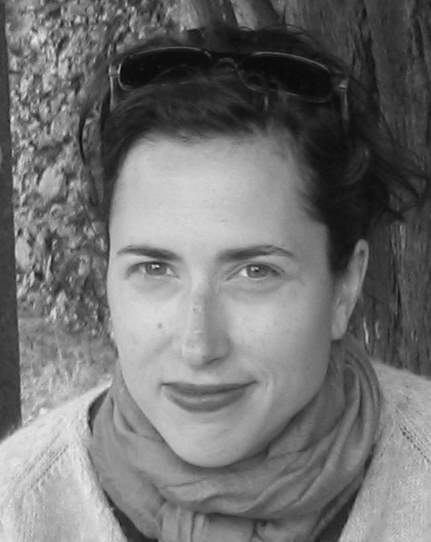When Covid sent masses of U.S residents into indoor isolation, beginning in March 2020, many of us conversely discovered, or at least reclaimed, the virtues of time spent outdoors. We biked, hiked, fished, camped, birded and strolled in record numbers, alone or with friends and family, and in so doing felt ourselves to be at least partially restored in mind and body.
As important as they are to our own mindsets, such greenspaces bring relief to our planet as well. As the Environmental Protection Agency points out, greenery such as trees and shrubs help to cool down urban environments by creating shade, deflecting the sun’s hot rays, and by pulling up water from the soil and releasing it into our air. Notably, communities with access to green spaces not only experience lower rates of mortality but fewer heat island effects, created by high numbers of paved areas and large buildings, as well.
And yet for too many communities, greenspace remains a rarity. According to the Trust for Public Land (TPL), some 100 million Americans still do not have access to a park or green space within a 10-minute walk of their home.
Sadiya Muqueeth, TPL’s director of community health, is on a mission to equitably create and preserve parks for public use, regardless of race, economic status or location. “Parks are very much at the bottom of the totem pole of needs,” says Muqueeth, noting that when
budgets run tight, much-needed funds for park maintenance are rerouted. That is, if there are parks to maintain in the first place: city planners often forget to include parks as part of their envisioned built environment, says Muqueeth. “Everybody deserves to have a healthy place to be outside, engaging in a greenspace in a way that’s welcoming, clean, safe.”
This is not to say that all municipalities are doing a poor job of connecting their residents to greenspaces. In fact, TPL recently released its 2022 ranking of the best U.S. cities for parks. Washington, D.C. came in at the very top of the list, with 98 percent of its residents able to walk to a good-quality park in 10 or fewer minutes — well above the median of 55 percent tallied by TPL across 14,000 American cities and towns. Also at the top: St. Paul, Minnesota; Arlington, Virginia; and Cincinnati, Ohio.
Begging the question, of course, as to what makes a park one to celebrate. There isn’t a one-size-fits-all answer. “Phoenix, Arizona’s tree canopy will look very different than Maine’s tree canopy,” notes Muqueeth. “With the help of landscape architects and environmental engineers, we need to make sure a park is locally tailored and supportive of that [particular] environment.” An essential part of the equation is making sure that community mem- bers have input into what they want and need from their outdoor spaces.
Experts note too that the sensation of wellbeing that comes from spending active moments in nature is more than just a feeling. It’s a very real phenomenon that scientific research shows benefits our physical, mental, social, and environmental health. Greenspaces improve individual attention spans and person-to-person social interactions. Parks, in particular, encourage us to exercise in a variety of ways. They might offer trails or open-air yoga classes, which in turn has positive impacts on chronic illnesses such as cardiovascular disease and hypertension. Even looking out your window at trees instead of, say, a parking lot can improve your outlook.
In August 2022, TPL was a partner in the grand re-opening of Panorama Park in Colorado Springs, Colorado, which actively courted community involvement. “One of the kids who participated said, ‘When they put in the [fitness machine] lot, I suggested that it was next to the playground so my mom could work out but she could also see my little sister,’” recalls Muqueeth. “That kind of experience where the community is able to really influence design based on the end-user experience is absolutely fantastic.” The park also features an event lawn with shady tree cover, hammock access, a multiuse sports field, and a climbing boulder — with stunning views of the Rocky Mountains to boot.
 Sadiya Muqueeth, Director of Community Health, The Trust for Public Land.
Sadiya Muqueeth, Director of Community Health, The Trust for Public Land. Freestanding traditional parks like New York’s Central Park and Boston’s nine-park Emerald Necklace chain are not the only sorts of greenspaces that are beneficial to our whole beings. Parklike “rural” cemeteries, community gardens, and a surge in rail trails for biking and walking, all have a part to play in keeping us feeling fit and happy, as long as we can get to them quickly and easily. This is why schoolyards have an outsize part to play in greening our neighborhoods, especially if efforts are made to keep them open after the school day is done as well as on weekends.
“They’re one of our most every-day, common destinations,” says Muqueeth. TPL is involved in a Community Schoolyard project that has so far helped transform almost 300 concrete rectangles into spaces replete with trees, urban farms, and play structures — over 200 of them in New York City alone — which is beginning to make a dent in park access for the 28 million American children currently without.
There’s work to do to improve access in rural areas as well; yet another TPL initiative is a community forest initiative, which protects and restores forested landscapes and uses them to connect small towns to each other, and to outdoor recreation opportunities.
No matter what state you live in, there are parks that need support, as well as groups that are actively working to drum up the resources to improve and expand them. Want to become more active in improving your own local greenspaces? Muqueeth recommends finding and connecting with one these organizations and asking them how you can best participate. “They’ve already built momentum and we can bring new voices, new ideas, and a new sort of excitement and energy” to those efforts, she says.
Whether Americans continue to enjoy all the outdoor activities that helped us de-stress, unwind, and connect since the pandemic began is an open question—although Muqueeth is confident demand is here to stay. However, one thing is clear: if we don’t fight for better greenspace access and maintenance in our own backyards, any gains we’ve made run the risk of disappearing with the next municipal budget. “At the end of the day we move dirt,” says Muqueeth. “But we need to ensure that there is an enabling environment when it comes to policy, conservation, finance, investment.”
That’s a job for all of us.



